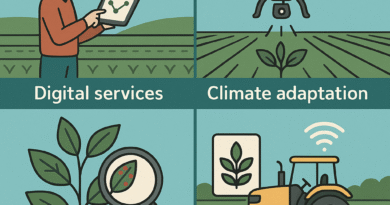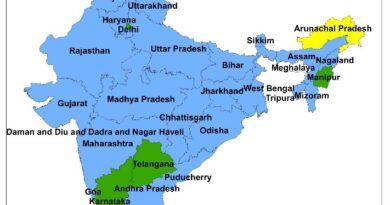GSLV-F10 Failure: ISRO’s EOS-03 Satellite Mission
Contents
Context:
The launch of earth observation satellite EOS-03 onboard GSLV-F10 was unsuccessful recently because of an anomaly in the rocket’s cryogenic upper stage.
- GSLV-F10 was ISRO’s eighth flight with indigenous cryo, 14th GSLV flight and 79th launch from Sriharikota.
About GSLV-F10 EOS-03 mission
- Geosynchronous Satellite Launch Vehicle-F10 (GSLV-F10) launched Earth Observation Satellite (EOS-03) on August 12 from second launch pad of Satish Dhawan Space Centre (SDSC), Sriharikota.
- EOS-03 is a state-of-the-art agile Earth observation satellite. It will be placed in the Geosynchronous Transfer Orbit by GSLV-F10.
- It was capable of imaging the entire country four to five times every day.
- Satellite will reach to the geostationary orbit using its onboard propulsion system, from where the satellite’s onboard propulsion system will guide it to a geostationary orbit, 36,000 km from earth’s surface.
- EOS-03, part of the new generation of earth-observation satellites, was meant to provide almost real-time images of large parts of the country.
- The images could be used for monitoring natural disasters like floods and cyclones, water bodies, crops, vegetation and forest cover.
- EOS-03 was being sent ahead of EOS-02 which has been delayed by the Covid-19 pandemic.
- Satellite will also carry a 4-metre diameter Ogive-shaped payload for the first time in this GSLV flight.
- This will be the fourteenth flight of GSLV.
Other of this category:
- EOS-02 was supposed to be launched around March-April this year, but now has been rescheduled for September-October.
- EOS-02 was supposed to ride on ISRO’s new SSLV (Small Satellite Launch Vehicle) rocket.
- SSLVs will broaden ISRO’s current rocket range that comprises PSLVs and GSLVs, and cater to the increasing demand for launching of small commercial satellites.
- In November 2020, ISRO had launched EOS-01, the first in the series of new earth observation satellites that bear a new generic naming system.
- It was launched by Polar Satellite Launch Vehicle (PSLV), the third generation launch vehicle of India.
- It is intended for applications in agriculture, forestry and disaster management support.
Reason for mission failure:
Problems in the cryogenic stage of this rocket are not new. A similar issue had led to the failure of GSLV-D3 as well in April 2010. That was the first flight of GSLV with an indigenous cryogenic engine modelled on the Russian design, very similar to the one flown on Thursday. The cryogenic stage had failed to ignite on that occasion as well.
Eight months later, the next GSLV flight, this time being powered by a Russian cryogenic engine, the last one of the seven that Russia had supplied as part of a deal in the 1990s, also failed. A failure analysis had found malfunctioning in the electronics of the cryogenic engine.
Between then and now, however, the GSLV Mk-II rocket has carried out six successful launches, all using that same indigenously developed cryogenic engine in the upper stage, the last one in December 2018 which deposited GSAT-7A, a communication satellite, into its orbit. The struggles with the cryogenic stage seemed to be a thing of the past, but Thursday’s failure has brought the ghosts back.
Impacts on the Future Missions:
- This was the second launch ISRO had lined up for 2021, which had suffered multiple delays after being originally scheduled for March 2020.
- Its successful mission was in February, which was Brazil’s earth observation satellite Amazonia-1 and 18 co-passenger satellites.
- The failure breaks a series of 16 consecutive successful launches by ISRO since 2017.
- Satellites had been planned for 2020-21, including OCEANSAT-3, GISAT-2, RISAT-2A, etc. with these missions set to cost an estimated Rs 701.5 crore.
- Missions like Gaganyaan and Chandrayaan-3 will be launched on GSLV Mk-III, a more advanced version of the GSLV rocket that is designed to carry much heavier payloads into space.
- It is a big cause of worry for the NISAR mission, a first-of-its-kind collaboration between NASA and ISRO for a joint earth-observation satellite.
- NISAR, which will use two synthetic aperture radars (SAR) to monitor the entire Earth in a 12-day cycle, is the most important mission as yet involving the GSLV Mk-II rocket.
ISRO’s Earth Observation Satellites
- Indian Space Research Organization (ISRO) launched its first Earth Observation Satellite in 1988 which is known as IRS-1A.
- ISRO has placed several Earth Observation Satellites in the Sun-synchronous orbit and Geostationary orbit.
- EOS-01 was launched on November 7, 2020. The EOS-01 is an Earth Imaging Satellite is a part of India’s RISAT series. The satellite is used for agriculture, forestry, and disaster management support.
- Other Earth Observation Satellites are OCEANSAT-2, RISAT-1 and 2, CARTOSAT-1, 2, 2A, 2B, RESOURCESAT-1, 2, 2A, SCATSAT-1, SARAL, Megha-Tropiques, INSAT-3D, INSAT -3DR, INSAT 3A, and Kalpana.
Types of orbit-
Geostationary orbit (GEO)-
- Satellites in GEO circle Earth above the equator from west to east following Earth’s rotation – taking 23 hours 56 minutes and 4 seconds – by travelling at exactly the same rate as Earth.
- This makes satellites in GEO appear to be ‘stationary’ over a fixed position.
- GEO is used by satellites that need to stay constantly above one particular place over Earth, such as telecommunication satellites.
- It can also be used by weather monitoring satellites, because they can continually observe specific areas to see how weather trends emerge there.
- Satellites in GEO cover a large range of Earth so as few as three equally-spaced satellites can provide near global coverage.
Low Earth orbit (LEO)-
- A low Earth orbit (LEO) is an orbit that is relatively close to Earth’s surface.
- It is normally at an altitude of less than 1000 km but could be as low as 160 km above Earth.
- LEO satellites do not always have to follow a particular path around Earth in the same way – their plane can be tilted.
- This means there are more available routes for satellites in LEO, which is one of the reasons why LEO is a very commonly used orbit.
- It is the orbit most commonly used for satellite imaging, as being near the surface allows it to take images of higher resolution.
- It is also the orbit used for the International Space Station (ISS), as it is easier for astronauts to travel to and from it at a shorter distance.
- A satellite takes approximately 90 minutes to circle Earth, meaning the ISS travels around Earth about 16 times a day.
- Individual LEO satellites are less useful for tasks such as telecommunication, because they move so fast across the sky and therefore require a lot of effort to track from ground stations.
Polar orbit and Sun-synchronous orbit (SSO)
- Polar orbits are a type of low Earth orbit, as they are at low altitudes between 200 to 1000 km.
- Satellites in polar orbits usually travel past Earth from north to south rather than from west to east, passing roughly over Earth’s poles.
- Sun-synchronous orbit (SSO) is a particular kind of polar orbit.
- Satellites in SSO, travelling over the polar regions, are synchronous with the Sun.
- This means they are synchronised to always be in the same ‘fixed’ position relative to the Sun.
- The satellite will always observe a point on the Earth as if constantly at the same time of the day.
- Such satellites are used to investigate how weather patterns emerge, when monitoring emergencies like forest fires or flooding or to accumulate data on long-term problems like deforestation or rising sea levels.
Transfer orbits and geostationary transfer orbit (GTO)-
- Transfer orbits are a special kind of orbit used to get from one orbit to another.
- Some satellites are not always placed directly on their final orbit and are instead placed on a transfer orbit, where, by using relatively little energy from built-in motors, the satellite or spacecraft can move from one orbit to another.
- This allows a satellite to reach, for example, a high-altitude orbit like GEO without actually needing the launch vehicle to go all the way to this altitude.
Source: Indian Express
You can find many articles on SPACE and SCIENCE AND TECHNOLOGY (part of GS III) in our website. Go through these articles share with your friends and post your views in comment section.
Discover more from Simplified UPSC
Subscribe to get the latest posts sent to your email.



